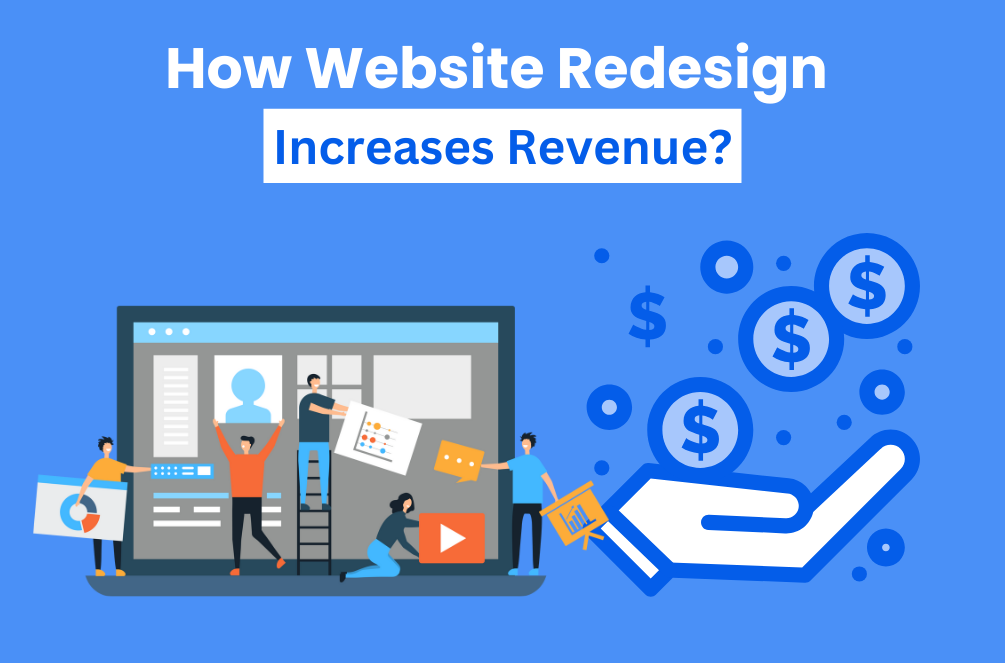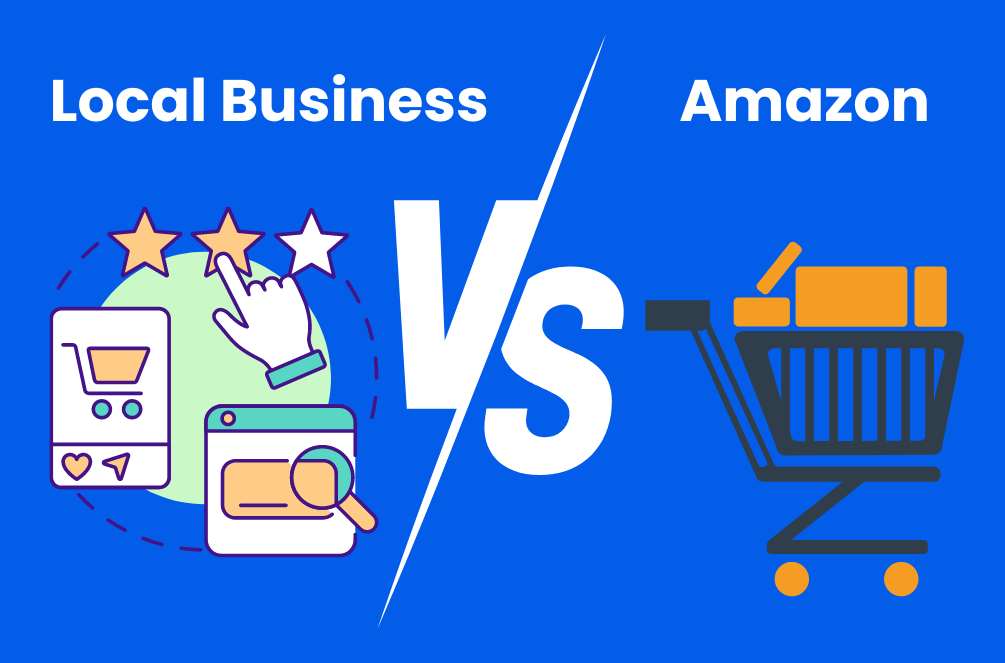In the fast-evolving digital landscape, an organization’s website serves as the virtual storefront and primary point of interaction with potential customers and is most important for every business. As consumer behaviors and preferences continue to shift, the significance of maintaining an engaging, user-friendly website cannot be overstated.
In this article, we explore the transformative impact of website redesign on revenue generation, shedding light on the pivotal role of user experience (UX) optimization, search engine visibility, and conversion rate optimization (CRO).
The process of “How Website Redesign Brings More Revenues” goes beyond mere aesthetics; it encompasses strategic enhancements that align with evolving customer expectations and search engine algorithms. Whether it’s streamlining navigation for seamless user journeys, optimizing for mobile responsiveness, or refining on-page elements for enhanced search visibility, a well-executed website redesign holds the potential to significantly bolster revenue streams and drive sustainable business growth.
The Impact of Website Design on User Experience
A well-crafted website that prioritizes user experience can effectively guide visitors through their journey, from initial engagement to conversion. As businesses struggle to understand and cater to the evolving needs of online consumers, the significance of “How Website Redesign Brings More Revenues” has become increasingly evident. Here are the best strategies to consider.
User-Friendly Interface and Navigation
A website redesign offers a prime opportunity to reshape your site’s user experience (UX). Poor navigation can frustrate visitors, leading them to abandon your site. By focusing on intuitive design and seamless navigation, you can retain visitors longer, reducing bounce rates and potentially increasing revenues.
Mobile Responsiveness and Accessibility
With mobile internet usage soaring, a mobile-friendly website is no longer a luxury—it’s a necessity. A redesign that includes responsive design ensures that users have a positive experience on your site, no matter their device. This enhances user engagement and conversion opportunities.
Visual Appeal and Branding
Your website often delivers the first impression of your brand. Aesthetic enhancements can convey professionalism and trustworthiness. Consistent branding throughout site elements can strengthen brand recognition and loyalty, which can translate into increased sales.

Conversion Optimization through Website Redesign
In the realm of digital marketing, the ultimate goal of a website is to drive conversions, whether it’s in the form of purchases, sign-ups, or other desired actions. A strategic website redesign can serve as a catalyst to solve the query of how website redesign brings more revenues by optimizing conversion pathways and enhancing the overall user journey. Let’s explore key strategies for leveraging website redesign to maximize conversion rates and boost revenue streams:
Streamlining the Sales Funnel
A well-planned website redesign presents an opportunity to streamline the user journey, guiding visitors toward conversion points with precision and clarity. By strategically placing compelling calls-to-action (CTAs), simplifying navigation, and refining the checkout process, businesses can remove friction from the conversion path, thereby increasing the likelihood of visitor engagement and subsequent conversions.
Clear Call-to-Action Buttons
Strong, clear calls to action (CTAs) are crucial for converting visitors into customers. Strategic placement and design of CTAs can make them more noticeable and enticing, prompting more clicks and conversions.
Optimizing Landing Pages
Each landing page serves as a potential gateway to increased business. During a redesign, optimizing these pages for conversions—by improving content, layout, and speed—can directly enhance revenue streams.
Persuasive Visual Elements
Visual elements play a pivotal role in capturing and retaining visitor attention, ultimately influencing their decision-making process. A website redesign can harness persuasive visual elements such as high-quality imagery, engaging videos, and visually appealing CTAs to create a compelling narrative that resonates with visitors. These elements not only enhance the aesthetic appeal of the website but also contribute to conveying brand messaging and value propositions, thus bolstering conversion opportunities.
Enhanced Trust and Credibility
Trust forms the cornerstone of successful conversions. A website redesign can focus on building trust and credibility through various means, such as prominent customer testimonials, security badges, and transparent policies. By instilling confidence in visitors regarding the reliability and legitimacy of the brand, businesses can mitigate apprehensions and nurture a conducive environment for conversions.
Performance Optimization
Website redesign presents an opportune moment to address performance-related aspects that directly impact conversions. From optimizing page load times to ensuring cross-device compatibility, every performance enhancement contributes to increased sales and clears the concern of how website redesign brings more revenue by fostering seamless user experiences. A faster, more responsive website not only delights visitors but also diminishes the risk of abandonment, thus preserving potential conversion opportunities.
SEO Optimization and Improved Rankings
Effective SEO optimization serves as a cornerstone for bolstering website performance and realizing sustained growth. Let’s delve into key strategies for enhancing website revenue to know how website redesign brings more revenues through SEO optimization and improved search engine rankings:
Targeted Keyword Integration
A strategic website redesign provides an opportune moment to conduct comprehensive keyword research and seamlessly integrate high-value keywords across the website. By aligning content with relevant search queries, businesses can enhance their visibility in search engine results pages (SERPs), capturing the attention of qualified prospects and fostering higher organic traffic.
Enhancing Website Speed and Performance
Website speed is a very important factor in both user experience and SEO which must not be denied. A faster website can reduce bounce rates and improve rankings, resulting in higher revenue potential.
Optimizing Meta Tags and Descriptions
Metadata plays a substantial role in search visibility. Optimized title tags, meta descriptions, and headers with relevant keywords can increase the click-through rate from the search engine results page to your website.
Content Quality and Relevance
Compelling, high-quality content lies at the heart of successful SEO endeavors. A website redesign can focus on elevating the caliber and relevance of content, catering to user intent and information needs. By crafting engaging, informative content that resonates with target audiences, businesses can fortify their online authority and cultivate a favorable relationship with search algorithms, culminating in improved rankings and heightened organic exposure.
Technical SEO Enhancements
A meticulous website redesign presents an opportunity to address technical SEO elements, ensuring that the website aligns with search engine best practices. From optimizing site speed and mobile responsiveness to refining site structure and implementing schema markup, these technical enhancements contribute to a more favorable evaluation by search engines, consequently augmenting rankings and enhancing overall website performance.
User Experience and Engagement
User experience (UX) and SEO are inherently intertwined, with search engines increasingly prioritizing websites that offer seamless, intuitive experiences to visitors. A website redesign can place an emphasis on UX enhancements, including intuitive navigation, clear calls-to-action, and mobile-friendly design, creating an environment that not only delights visitors but also garners favor from search engine algorithms, leading to improved rankings and sustained organic traffic growth.
Authority Building and Link Acquisition
A holistic SEO strategy encompasses efforts to fortify the website’s authority and secure valuable backlinks from reputable sources. Through a website redesign, businesses can focus on developing authoritative, link-worthy content assets and fostering relationships with relevant influencers and publications, thereby bolstering their backlink profile and signaling to search engines the trustworthiness and credibility of their website, ultimately contributing to improved rankings.
Conclusion | How Website Redesign Brings More Revenues
To summarize, a well-planned website redesign can greatly enhance user experience, optimize conversion rates, improve SEO performance, and ultimately, scale up your revenue.
Now is the time to embrace the potential of a rejuvenated website. Whether you are a web designer, a business owner, or a marketing professional, investing in a professional website redesign could be the key to unlocking unprecedented business growth. Let us help you capture the essence of your brand and convert more visitors into loyal customers.
Remember, in the digital age, your website is often your most influential salesperson. Make it count.
Frequently Asked Questions
How can a website redesign influence conversion rates?
A website redesign can significantly improve conversion rates by offering a streamlined, user-friendly experience that encourages engagement and simplifies the conversion process.
Is mobile responsiveness still crucial for SEO in a website redesign?
Mobile responsiveness is crucial for SEO as it directly impacts user experience and is a factor in search engine rankings, especially after Google’s mobile-first indexing update.
Can schema markup in a website redesign affect search engine visibility?
Yes, implementing schema markup during a website redesign can enhance search engine visibility by enabling rich snippets, which make your page stand out in SERPs.
How does page load speed impact a website’s SEO performance post-redesign?
Page load speed is a ranking signal for search engines, with faster loading times leading to better user experiences and potentially higher rankings in search results.
Why is intuitive navigation important in a website redesign from an SEO perspective?
Intuitive navigation is important because it helps visitors find information quickly and easily, reducing bounce rates, which can positively influence search engine rankings.




